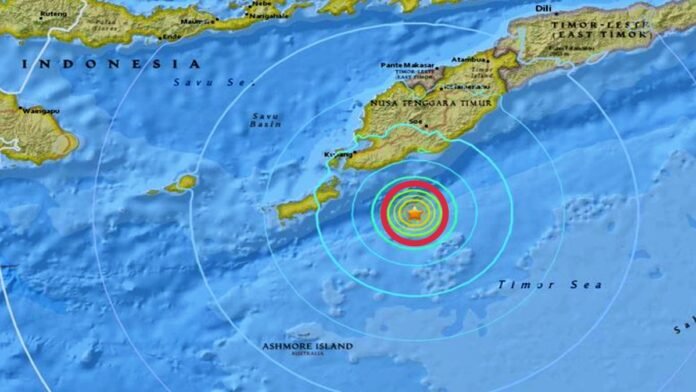
Key Points:
- A powerful 7.7 magnitude earthquake hit central Myanmar on March 28, 2025, causing severe destruction.
- The quake’s epicenter was near Mandalay, leading to multiple building collapses and significant casualties.
- Tremors were felt across five countries, including Thailand, India, China, and Bangladesh.
- Emergency measures have been implemented in Thailand and Myanmar as rescue operations commence.
Mandalay: On Friday, March 28, 2025, a catastrophic earthquake measuring 7.7 on the Richter scale struck central Myanmar at approximately 12:50 PM local time. The quake’s epicenter was located near Mandalay, the country’s second-largest city, resulting in widespread devastation across the region. This seismic event has drawn comparisons to the devastating earthquake that struck Nepal nearly a decade ago, leaving residents in East Asia terrified as they witnessed buildings collapse around them.
The impact of the earthquake was felt not only in Myanmar but also in neighboring countries such as Thailand, India, China, and Bangladesh. In India, tremors were reported in cities including Kolkata, Imphal, and Meghalaya. Meanwhile, areas in China adjacent to Myanmar also experienced shaking. However, the most severe damage occurred in Myanmar and Thailand.
Myanmar: The Epicenter of Destruction
Myanmar has borne the brunt of this disaster. Eyewitnesses reported horrific scenes as buildings crumbled and chaos ensued. The earthquake’s intensity was classified as extremely high, with a magnitude of 7.7 recorded by the United States Geological Survey (USGS). The aftermath has been devastating; reports indicate that at least 107 people have died and over 300 others have sustained injuries. Tragically, many remain trapped beneath the rubble of collapsed structures.
The Ava Bridge on the Irrawaddy River in Mandalay collapsed due to the quake’s force, while significant damage was reported at various temples and Buddhist sites throughout the city. In Naypyidaw, the capital of Myanmar, major highways were uprooted. Videos circulating on social media depict scenes of destruction that have left many residents in shock.
Thailand: A Nation on High Alert
In Thailand, particularly in Bangkok—approximately 1,000 kilometers away from the epicenter—life came to a standstill as panic swept through the streets. Prime Minister Patongtarn Shinawatra declared a state of emergency across the country and imposed lockdown measures in Bangkok. Public transport services were halted, and trading on the stock market ceased.
A construction site in Bangkok suffered a catastrophic collapse during the quake, trapping approximately 400 workers inside. As rescue operations commenced, initial reports confirmed three fatalities and dozens more missing. Eyewitness accounts describe scenes of chaos as individuals fled buildings in alarm; some were seen evacuating hotels still dressed in their bathrobes.
Rescue Operations Underway
Emergency services are currently engaged in rescue operations across both Myanmar and Thailand. In Myanmar’s Mandalay General Hospital, medical staff are treating numerous injured individuals who were evacuated from damaged structures. Reports indicate that many patients were forced to leave their beds while still connected to IV drips due to safety concerns.
Authorities are working tirelessly to assess damage and locate missing persons amidst the rubble of collapsed buildings. The USGS has warned that thousands may be feared dead or trapped as rescue efforts continue.
This earthquake marks one of the most powerful seismic events to hit Myanmar since 1912 and poses significant challenges for a nation already grappling with civil unrest and limited resources for disaster response. As rescue operations unfold, communities across East Asia remain hopeful for swift recovery amidst this tragedy.





















































